Understanding the Navadurga through the spiritual canvas of Bapu's Bhav-vishwa (devotional realm) - Part 9
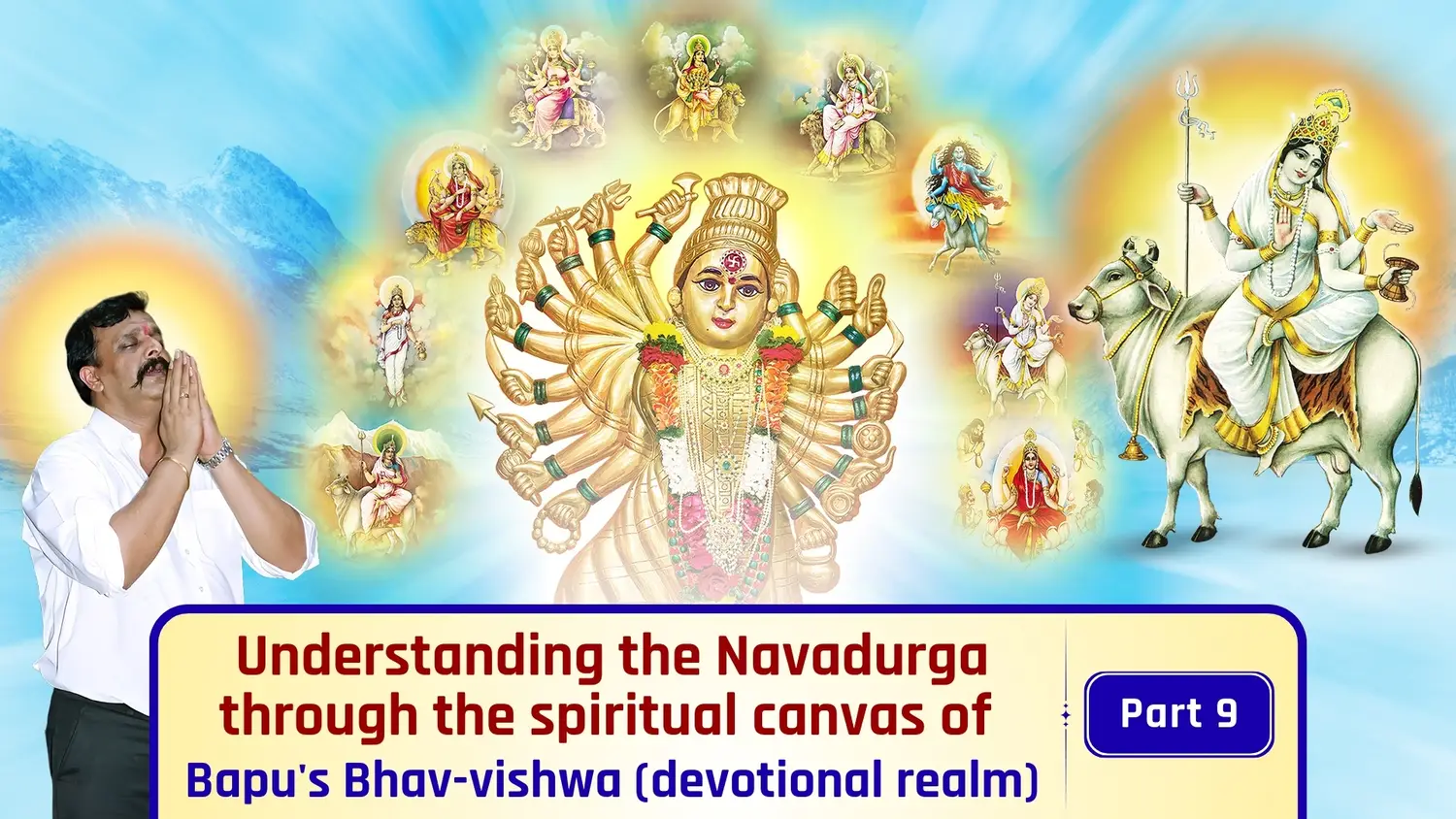
Reference: From the editorials numbered 1396 and 1397 in the Tulsipatra series of the daily ‘Pratyaksha’ by Sadguru Shree Aniruddha Bapu.
In Tulsipatra – 1396, Sadguru Shree Aniruddha Bapu writes:
It was before everyone, the form of the seventh Navadurga, Kalaratri, began transforming into the eighth Navadurga, Mahagauri. The transformation was happening very slowly, extremely slowly.
Until now, none of the previous transformations had taken even a moment, but since time itself does not exist on Mount Kailash, no one there could truly perceive how slow it was. However, as each one was constantly engaged in some Nityajap (chanting of some mantra on daily basis), they were aware that countless cycles of their chants had already completed, and yet the transformation continued.
The curiosity among those present gradually began turning into restlessness, and that restlessness started unsettling their minds. From the Maharshisto the Shivaganas, every mind had reached the peak of longing and then fallen from it, becoming completely disturbed and restless.
But all Brahmarshis, on the other hand, were becoming increasingly calm, absorbed, and blissful because of this very slow process of transformation.
Seeing this, the restlessness and instability in the minds of others only grew stronger.
Would the Adimata allow her children to remain in such a state? Certainly not.
With compassion in her eyes, the AdimataShreevidya looked upon them all and began to speak:“O dear ones, your minds have now entered the state called ‘Tharva’ (थर्व'). Ordinarily, a human reaches this state due to the extreme dominance of his six foes of good life and spirituality —desire,temptation, anger, greed, arrogance, and jealousy.
But you all have reached this Tharva state for one single and sacred reason- ‘असतोमासद्गमय', i.e. to know the mystery and essence of pure existence and pure action and that too not for any selfish purpose, but solely out of a pure and sattvik longing to fully understand the eighth Navadurga, Mahagauri.”
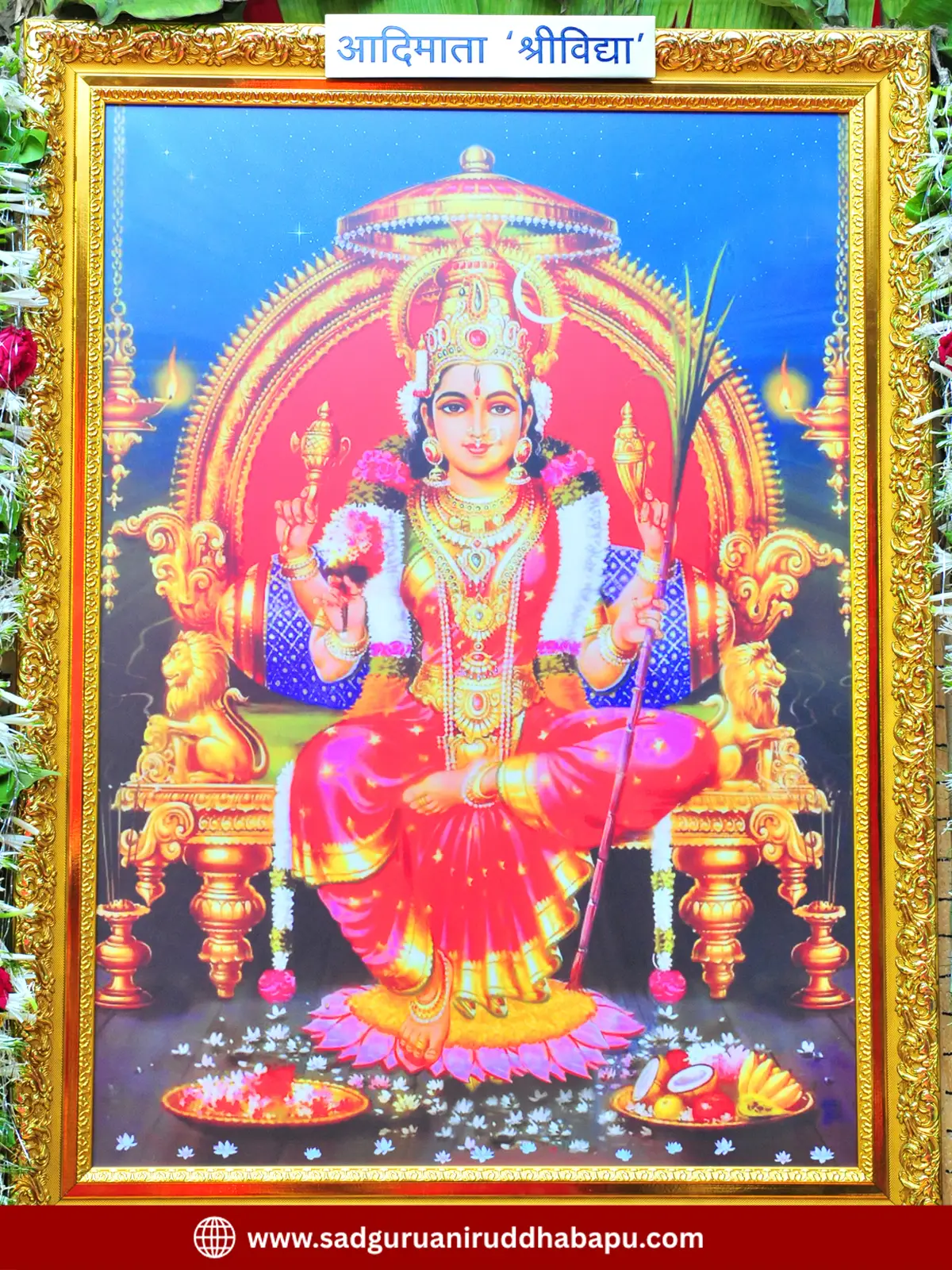
“O Shiv-Rishi Tumburu! until this transformation is complete, narrate to everyone here the story behind this transformation.”
After bowing down fully to the AdimataShreevidya, Shiv-Rishi Tumburu began the narration:
“O beloved ones, once Parvati resolved to completely destroy all demonic forces, forms, and tendencies that existed on the earth and in the surrounding realms of space. That was when, for the first time, her form as ‘Kalaratri’ appeared.
Parvati had taken this decision for a single reason — at that time, Bhagwan ParamShiva was engaged in intense penance so that the Ghanpran Ganapati, could take birth.
This penance of ParamShiva needed to be completed quickly, but the demonic forces were obstructing it. The process of giving birth to the Ghanapran of the universe had only ten thousand years remaining. Therefore, theBhaktamata firmly resolved to wage war. She fulfilled her resolve within just one hundred human years, and as a result, Shiva’s penance, which was to last for much longer, was completed fully within only eight human years.
Because of this, all preparations were completed for the birth of the divine son — Vinayaka Brahmanaspati — known as Ganapati, exactly at the desired moment.
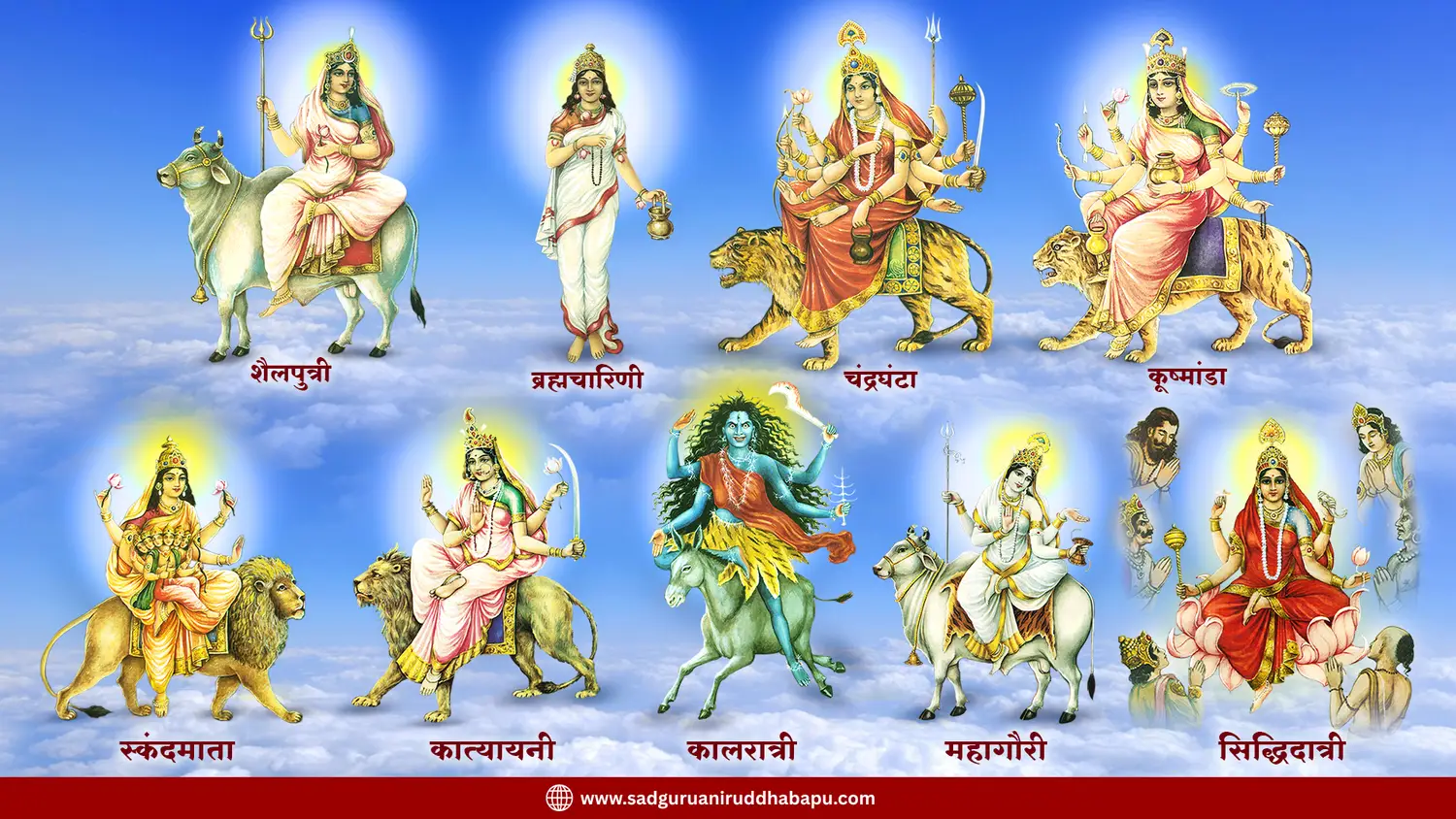
When ParamShiva completed his penance and opened his eyes, he saw this fierce form of Parvati. Realizing that his beloved consort had cast away her own beauty and assumed this terrifying form solely for his sake, Shiva looked upon her with deep love and tenderness.
Along with that, the Ganga flowing in Bhargloka (the seventh Ganga) originated from both of Paramshiva's eyes, and ParamShiva began anointing his beloved wife with the water of that seventh Ganga.
ParamShiva himself took drops of water from the seventh Ganga and gently applied them over Parvati’s body.
This unique abhishek and anointment continued for one hundred and eight human years, and at that moment, the eighth Navadurga, Mahagauri, began to shine forth in her full glory.”
When Shiv-Rishi Tumburu finished narrating, the eighth Navadurga, Mahagauri, manifested completely in her resplendent form.
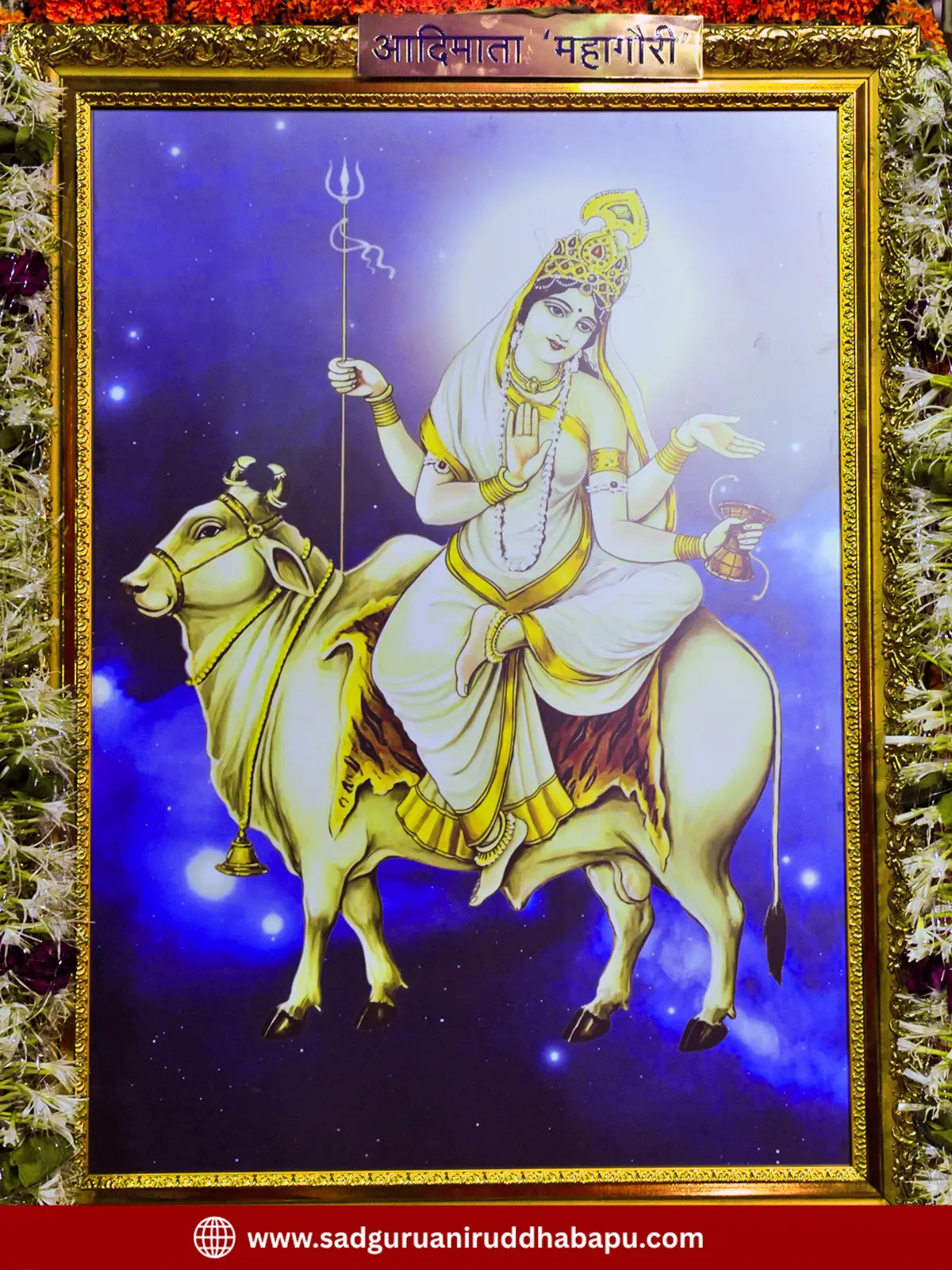
She had four hands. Her upper right hand was in the gesture of protection, the lower right hand held a trident, her upper left hand held a damaru (small drum) that emitted a gentle and soothing sound, and her lower left hand was in the gesture of blessing.
Mahagauri’s complexion was radiant white. All her garments were moon-white in color.
She was adorned with pearl ornaments all over her body, and around her neck were garlands of fragrant white flowers.
Her gaze was filled with motherly affection, serene, peaceful, and deeply satisfying.
She was mounted on a white bull, which was equally serene and calm in nature.
There was no third eye on her forehead.
From the gentle movements of her eyelashes, fragrant and soothing streams of energy spread everywhere.
As that energy touched each person present, their restless Tharvastate transformed completely into a tranquil Atharvastate.
In Tulsipatra – 1397, Sadguru Shree Aniruddha Bapu writes:
The Adimata Shreevidya instructed Brahmavadini Lopamudra to perform the worship of Mahagauri.
Accordingly, Lopamudra, along with the other divine women, worshipped Mahagauri with fragrant white flowers.
Mahagauri gathered all the white fragrant flowers offered to her in her palms and showered them upon all who were present.
Amazingly, each person received only one white flower, but every flower had eight petals.
After that, the eighth Navadurga, Mahagauri, performed the worship of the AdimataShreevidya and of Anasuya with flowers of various colors and fragrances.
As soon as Mahagauri offered her flowers at the lotus feet of the Adimata, the white flowers held by everyone became even more radiant and blissful.
Those eight-petaled flowers spread the qualities of peace, contentment, steadiness, courage, and joy within the Trividha Deha of every being present.
Each person felt clearly that this flower had become permanently attached to his hand and that it was making his entire mind more beautiful and stronger.
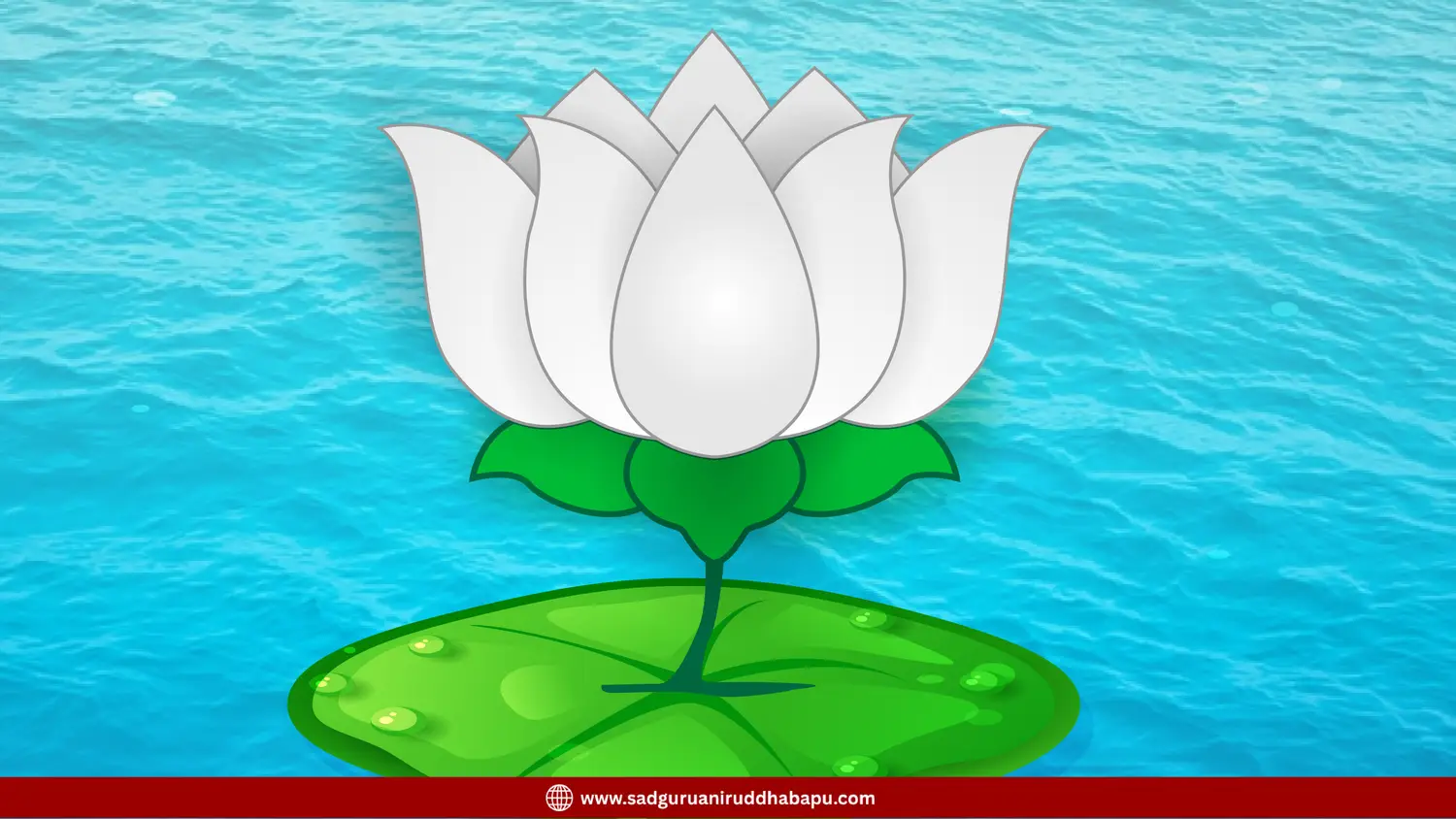
Then, following the command of Mahagauri, Brahmavadini Lopamudra turned to the assembly and said:
“O dear ones, this eighth Navadurga, Mahagauri, is the presiding deity of the fifteenth and sixteenth step of the Shambhavi Vidya and the presiding deity of the day and night of the eighth lunar day (Ashtami) of Navaratri.
You have already heard how ParamShiva created this radiant form, Mahagauri, through the anointment and bathing with the waters of the seventh Ganga of the higher realm. But naturally, the question arises — if there is a seventh Ganga, what about the other six?
For now, remember only this: the first Ganga descended to Earth, and then there is one Ganga in each of the other realms (loka).
The knowledge of all these Ganga streams is revealed only after a seeker crosses the fifteenth and sixteenth step of the Shambhavi Vidya.
This seventh Ganga of the Bhargaloka is formed from the waters of the Kshirsagar (Ocean of Milk) itself. She is known by the names ‘Amritavahini’,‘Amritavarshini’, and ‘Chandramadhuprasavini’.
Mahagauri and this seventh Ganga are considered twin sisters because their functions are identical.
At the fifteenth and sixteenth steps of the Shambhavi Vidya, the seeker must, in the presence of his Guru and under his guidance, learn the sacred practice called the ‘Shree Shambhavi Mudra’, perform it thrice daily, practice it regularly, and gain complete knowledge of it.
It is this eighth Navadurga, Mahagauri, who enables all this to happen.
Look carefully: from the beginning, we have seen that Mahagauri does not have a third eye on her forehead; there is a Kumkum tilak instead. But this is not the truth.
Mahagauri indeed has a third eye, but no one can see it — not even the Brahmarshis and Brahmavadinis.
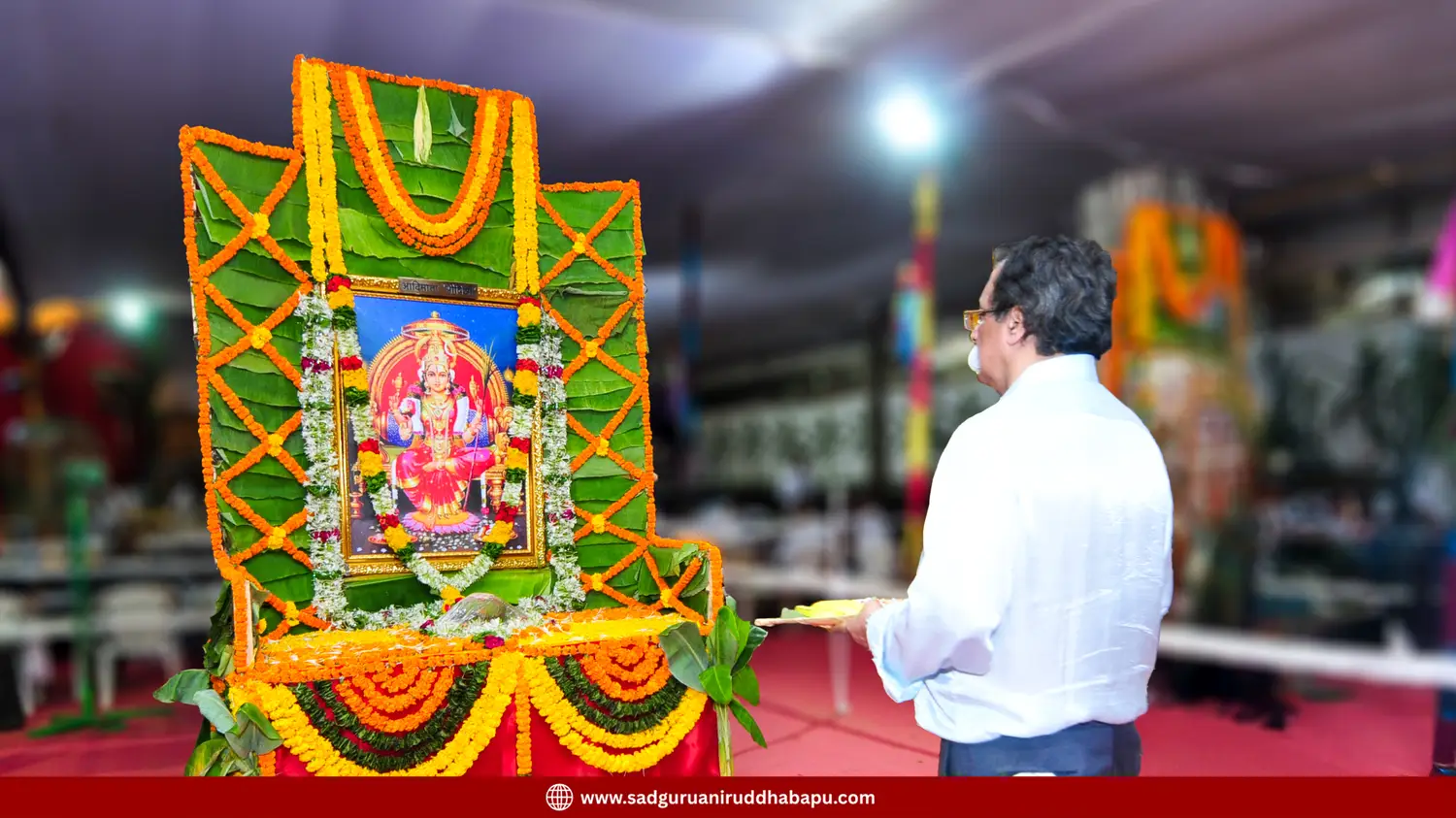
Why is this so?
This itself is the secret of the Shree Shambhavi Mudra.
While performing this Mudra, the seeker, following the command of his Guru, must sit in a relaxed posture with both eyes fully closed. Then, behind the closed eyelids, he must gently focus his inner sight upon the spot of his own Adnya chakra — the location of the third eye.
How long this practice should be done, how it should be done, when mantras are to be recited, which mantras are to be chanted, when the mind should be kept still, and when it should be fixed upon the Adnya chakra — all this is personally taught by the Sadguru to each seeker during the Brahma muhurta (early hours before dawn), on the banks of a sacred river.”
Hearing Lopamudra’s description of Shree Shambhavi Mudra, everyone present, from the Maharshisto the Shivaganaswas filled with joy, and a desire arose in each of their hearts, 'May we also attain this'.
Seeing this, Lopamudra said, “Do not attempt such practices on your own. Do not make the mistake of trying suddenly, merely by hearing descriptions from me or anyone else.
This Shree Shambhavi Mudra can be received and practiced only upon reaching the fifteenth and sixteenth stages of the Shree Shambhavi Vidya.
This Mudra reveals the profound secret of the oneness, the unity, and the eternal companionship of Shiva and Shakti — ‘a state of being distinct yet inseparable’.
To know the ‘Adimata’ and her form, the ‘Adipita’, and to belong wholly to them, this alone must be the aim and purpose of one’s life at these stages.
And dear ones, this very Mahagauri, who bestows such supreme knowledge, continues to bless ordinary devotees according to their level of faith, granting them greater peace of mind, strength, steadiness of Chitta, and spiritual progress.”
